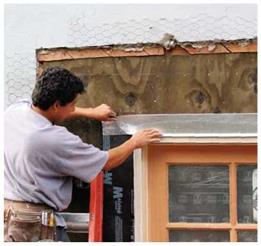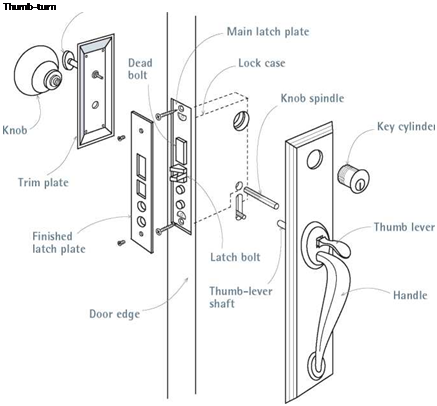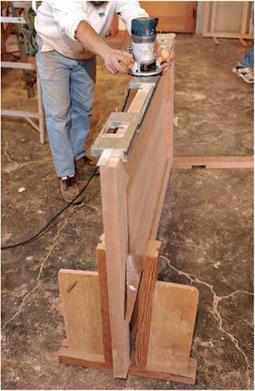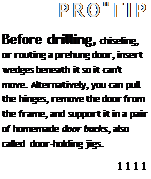FINE-TUNING FRENCH DOORS
Now it’s time for fine-tuning the installation or, as the pros call it, working the frame. Here are a few things you might see and what to do about each:
► Doors hitting in the center. Ease off the shims behind the jambs. If the problem is a bowed jamb, use additional nails to pull it back toward the RO or, better yet, use 2h-in. screws.
► Doors too far apart in the center. Shim out from the RO more. If that doesn’t work or if you must shim so much that the center of the jamb bows, the head jamb was probably milled too long and should be cut down. The gap between the double doors should be 54e in. or whatever the manufacturer suggests.
► Wider gap between doors near the top. Shim out behind a top hinge on one side.
► Uneven door heights, binding in a corner. One corner is lower than the other; drive a shim in under the jamb on the low side. Less likely, one jamb is too long. If you use a Japanese saw, you can cut the jamb in place; pull the nails tacking the jamb to the RO and then pry down from the top corner of the cut jamb.
► Doors aren’t in plane. The frame or RO is twisted. Use a level to see which element is out





After the doors are set and the casing is installed, apply foil-faced, peel-and-strip flashing over the top flange of the head casing if the doors aren’t protected by an overhang. Note that this flashing overlaps the fiber-reinforced flashing on each side. To facilitate painting, the manufacturer premasked the lights with plastic film.
of plumb. If it’s the frame, pull the nails holding it in place and push the high edges in and the low ones out. If the RO is racked (out of plane), use a sledgehammer as described earlier in this chapter to move the bottoms of the walls until you plumb them. Finally, if the walls and frame jambs are plumb, the door may be warped.
► The door won’t stay shut, or one hinge binds while the others work fine. See if the jamb is twisted. You may need to reset the shims until the jamb is square to the door. Otherwise, the hinge may be irregular. To correct it, use an adjustable wrench or locking pliers to bend the knuckles on one of the hinge leaves. Bend the leaf on the door, though, because you’ll probably split the jamb if you try to bend a leaf attached to it.






Leave a reply